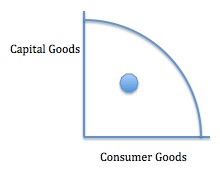Gender gaps range from the value of reproductive capital to pay.
Let’s take a look.
6 Facts: Gender Gaps
1. There is a fertility human capital tradeoff.
The number to remember is $7,000.
In a recent paper, University of Pennsylvania economist Corinne Low concluded that, after age 30, a woman needs to add $7,000 each year to her income. Otherwise, she will become less attractive to potential mates. The reason relates to the value of a woman’s “reproductive capital.” While Low’s data displayed that male online daters with no children preferred younger women, it also showed that elevated earning power offset the preference. Although men were rated higher as they aged and women lower, an extra $7,000 annually kept “older” women in men’s preferred radar. Low used her data to quantify the reproductive/human capital tradeoff. She also cited the resulting dilemma, Earning more diminishes women’s reproductive capital.
2. Globally, the size of thr gender pay gap varies.
Among the OECD’s developed nations, South Korea is last in the pay gap list. At 31.12 percent, the difference is about more than money. According to FT, South Korean women have a lower labor force participation rate and the highest educational attainment. The result is a waste of talent and productivity. As for female executives, one quarter of the top 100 Korean firms had none.
Looking at the gender pay gap in selected countries, we see Norway’s 4.6 percent gap is tiny compared to South Korea’s 31.1 percent:
 3. South Korea has a relatively large gender pay gap and small female participation rates.
3. South Korea has a relatively large gender pay gap and small female participation rates.
With the y-axis illustrating the pay gap and the x-axis showing participation rates, this graph says it all. You can see South Korea at the top with a larger gender pay gap and smaller participation rates. I wonder if we can say that the U.K. is close to a sweet spot for gender equality:

4. The pay gap has been shrinking.
Although the data end six years ago, still, the downward pay gap trend is evident:

5. Women have borrowing opportunities in lower income countries.
In lower income countries, women take advantage the small loan availability through microfinancing opportunities. The possibilieies could include the Grameen Bank and Rotating Saving and Credit Associations (ROSCAs):
6. Revealing the pay gap, transparency is spreading.
At econlife, our look at pay transparency ranged from Finland’s National Jealousy Day to a new NYC mandate. Below, we can see the extent of pay gap reporting among OECD countries:
Our Bottom Line: Underutilization
One word can summarize where gender gaps take us: Underutilization
Taking the last step with a production possibilities frontier, we can illustrate underutilization. Whereas our curved line shows an economy’s maximum production potential, the dot indicates underutilization. Wherever we find a gender gap, we have a country producing less than they could be:
My sources and more: This summary of Corinne Low’s research and her newest paper were today’s inspiration. Then, unable to figure out an entire post based on her work, I looked elsewhere to the OECD, FT, and my favorite go-to fact site, Our World in Data. (Please note that most of “Our Bottom Line” was in a previous econlife post.)


 3. South Korea has a relatively large gender pay gap and small female participation rates.
3. South Korea has a relatively large gender pay gap and small female participation rates.






